
Buckeye Brain Aging Lab (B-BAL)
PI: Scott M. Hayes
The Buckeye Brain Aging Lab (B-BAL) examines age-related changes in memory and the brain, variables that optimize cognitive and brain health (cardiorespiratory fitness, mobility, strength), and the neural correlates of memory in healthy and patient populations.
Highlighted publications:
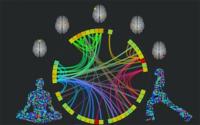
Clinical Neuroscience Lab
PI: Ruchika Prakash
The Clinical Neuroscience Lab seeks to assess the efficacy of psychosocial lifestyle interventions, including physical activity and mindfulness meditation, in improving cognitive and affective functioning in clinical and healthy populations. The lab’s research utilizes resting state and task-based functional connectivity to elucidate potential mechanisms underlying change from healthy lifestyle behaviors.
Highlighted publications:
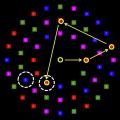
Cognitive Control Lab
PI: Andrew B. Leber
The Cognitive Control Lab aims to understand how we control behavior. The lab is especially interested in our abilities to resist distraction and suppress irrelevant information, the influences of past experience, and the factors motivating the choice of optimal vs. suboptimal control strategies.
Highlighted publications:
Irons, J. L. & Leber (2020). Developing an individual profile of attentional control strategy. Current Directions in Psychological Science. Advance Online Publication https://doi.org/10.1177/0963721420924018
Leber, A. B., Turk-Browne, N. B., & Chun, M. M. (2008). Neural predictors of moment-to-moment fluctuations in cognitive flexibility. Proceedings of the National Academy of Sciences, USA, 105 (36), 13592-13597. https://doi.org/10.1073/pnas.0805423105
Interpersonal Social Cognitive Neuroscience Lab
PI: Dylan Wagner
The Wagner Interpersonal Social Cognitive Neuroscience Lab studies how the brain encodes and retrieves socially relevant information, from knowledge about ourselves and our friends to how the brain represents rewards and temptations such as food and drugs. Using a combination of functional neuroimaging, machine learning techniques and naturalistic stimuli (e.g., movies, stories, virtual reality and natural scenes), research in the lab is working towards developing methods to gain access to how individuals think and feel about the people and temptations that surround them.
Highlighted publications:
Delwin Lindsey
Dr. Lindsey's lab studies human color vision. They use fMRI techniques to explore neurophysiological correlates of the high level representation of color appearance, categorization and memory. They are particularly interested in the role of language in mediating these representations.
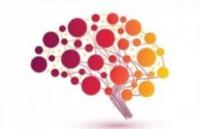
The MINDSET Lab
PI: Jasmeet Hayes
The MINDSET lab studies the chronic effects of traumatic brain injury and psychological stress on the brain, cognition, and risk for neurodegenerative disease. We incorporate neuroscience tools including structural T1-weighted imaging, diffusion tensor imaging, and fMRI with genetic and molecular markers to examine links between trauma and neurodegenerative disease.
Highlighted publications:
Model-based Cognitive Neuroscience Lab
PI: Brandon M. Turner
The Model-based Cognitive Neuroscience Lab investigates how individual experiences shape one’s representations of the world, and ultimately how these representations guide behavior. To this end, a large component of the lab’s focus is on understanding how brain and behavioral data can be linked to form a more complete understanding of the mind.
Highlighted publications:
Multidisplinary Opportunities for Movement Education and Science (MOvES) Lab
PI: James Onate
The Multidisciplinary Opportunities for Movement Education & Science (MOvES) Lab is made up of a group of athletic trainers, engineers, and students who are exploring human movement. The MOvES Lab is directed by Dr. James Onate and works in conjunction with the Movement Analysis and Performance (MAP) Lab and the Human Performance Collaborative (HPC)
The goal of the MOvES Lab is to minimize the occurrence of injuries and increase performance in a variety of active populations. The MOvES Lab works with Ohio State athletes, the military, youth baseball teams, high school athletes across the country, and active individuals in the Columbus area.
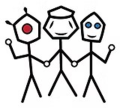
Social & Affective Immunology Lab
PI: Baldwin Way
The Social & Affective Immunology Lab's research is focused on how psychological factors (e.g. stress; valence weighting bias) trigger the immune system and also how the immune system can alter emotions and decision-making. They use both pharmacological (acetaminophen; ibuprofen; typhoid vaccination) and endogenous measures (e.g. C-Reactive Protein) of immune function. They are also conducting a large, longitudinal imaging study of adolescents to look at how geospatial stress exposure alters neural activity and predicts future substance use.
Social Cognition, Adjustment, and Neurodevelopment (SCAN) Lab
PI: Kristen Hoskinson
The Hoskinson Lab aims to improve understanding of the neuroanatomical and functional substrates that contribute to cognitive, emotional, and behavioral morbidities after childhood neurologic injury. Their research integrates neuroimaging methods with assessed and observed social and emotional function to identify those at greatest risk of poor outcome. Current funded work examines the neural and behavioral consequences of traumatic brain injury, congenital heart disease, and pediatric cancer.
Highlighted publications:
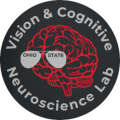
Vision & Cognitive Neuroscience Lab
PI: Julie Golomb
The Vision & Cognitive Neuroscience Lab uses perceptual and computational cognitive neuroscience techniques to investigate human visual processing. Research topics include how visual properties such as color, shape, and spatial location are perceived and coded in the brain, and how these representations are influenced by eye movements, shifts of attention, and other dynamic cognitive processes.
Highlighted publications:
Z-Lab
PI: Zeynep Saygin
The Z-Lab studies Developmental Cognitive Neuroscience. We use longitudinal neuroimaging and computational modeling to investigate the developing human brain, answering questions like: What are the brain building blocks that we are born with, how do they change with maturation and experience, and can we use this information to predict the development of individual abilities later in life?
Highlighted publications:
